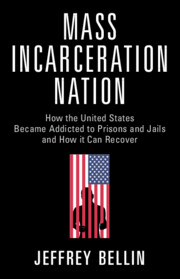 Mass Incarceration Nation
Mass Incarceration Nation Book contents
- Mass Incarceration Nation
- Mass Incarceration Nation
- Copyright page
- Contents
- Figures
- Tables
- Acknowledgments
- Introduction
- Part I What Is Mass Incarceration?
- Part II The Building Blocks of Mass Incarceration
- Part III The Mechanics of Mass Incarceration
- Part IV The Road to Recovery
- 18 What Success Looks Like
- 19 (Mostly) Abolish the Feds
- 20 Less Crime, Part 1
- 21 Less Crime, Part 2
- 22 Reducing Admissions and Shortening Stays
- Conclusion
- Notes
- Index
18 - What Success Looks Like
from Part IV - The Road to Recovery
Published online by Cambridge University Press: 03 November 2022
- Mass Incarceration Nation
- Mass Incarceration Nation
- Copyright page
- Contents
- Figures
- Tables
- Acknowledgments
- Introduction
- Part I What Is Mass Incarceration?
- Part II The Building Blocks of Mass Incarceration
- Part III The Mechanics of Mass Incarceration
- Part IV The Road to Recovery
- 18 What Success Looks Like
- 19 (Mostly) Abolish the Feds
- 20 Less Crime, Part 1
- 21 Less Crime, Part 2
- 22 Reducing Admissions and Shortening Stays
- Conclusion
- Notes
- Index
Summary
While there is broad agreement that this country incarcerates too many people, there is a distressing lack of clarity about how to address the problem. At one end of the spectrum are “abolitionists,” who view American criminal law enforcement, like slavery, as an illegitimate institution that can only be abolished, not reformed. Broadly speaking, abolitionists want to get rid of prisons, defund the police, and adopt noncoercive strategies to deal with crime. Or, as Woods Ervin, an organizer with Critical Resistance, a prominent abolitionist organization, explains, “abolition is a political vision with a goal of eliminating imprisonment, policing, and surveillance and creating lasting alternatives to punishment and imprisonment.”1 Abolitionists contrast their approach with that of “reformers.” Reformers view the criminal justice system with more optimism or, at least, as a necessary evil. They seek changes to, not the elimination of, existing law enforcement architecture. Abolitionists think reformers are too timid. Reformers think abolitionists are impractical.
Keywords
- Type
- Chapter
- Information
- Mass Incarceration NationHow the United States Became Addicted to Prisons and Jails and How It Can Recover, pp. 165 - 169Publisher: Cambridge University PressPrint publication year: 2022


